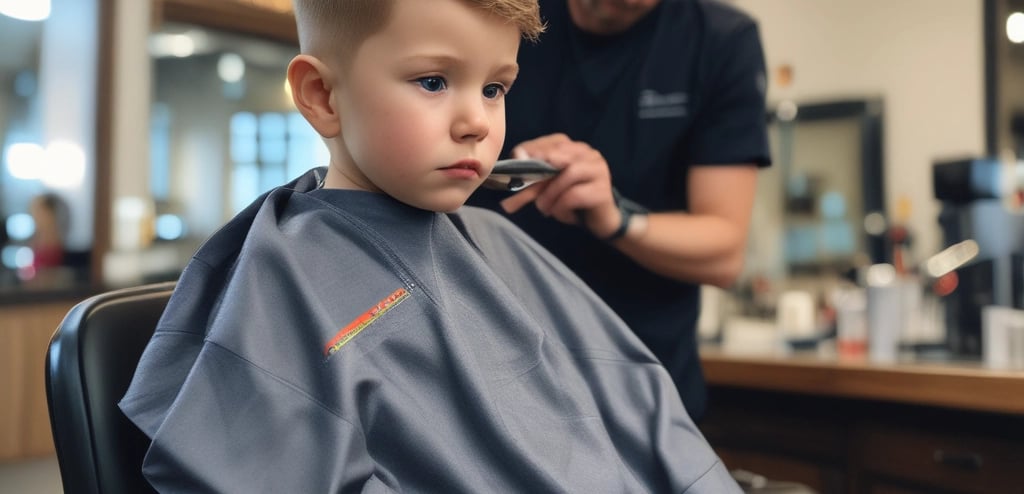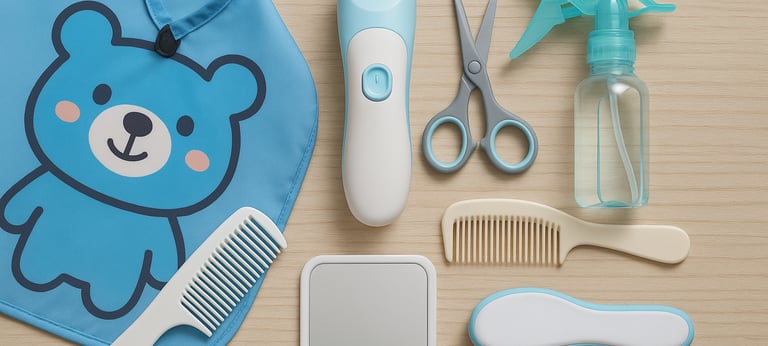When Haircuts Become Heartbreaks: My Journey Cutting My Autistic Toddler’s Hair at Home ✂️
Haircuts shouldn’t feel like heartbreak — but for parents of autistic or sensory-sensitive toddlers, they often do. In this post, I open up about the emotional struggle of bringing my 3-year-old son for a haircut, the tears, the stares, and the stress — and how I found peace (and the right tools) by cutting his hair at home. Discover gentle, sensory-friendly hair-cutting tools from Amazon that can help make haircuts calmer, safer, and less overwhelming for both you and your child.
10/8/20253 min read


If you’re a parent of a neurodivergent or autistic little one, you already know — haircuts can feel like a battle. A simple trim turns into tears, meltdowns, and stares from strangers who just don’t understand.
I’ll never forget the first time I took my son — who’s three and on the autism spectrum — to the salon. He cried before the buzzer even touched his head. Just the sound, the lights, the unfamiliar faces… everything overwhelmed him. I could see it in his eyes confusion, fear, and sensory overload.
And then there were the looks. The ones from other customers who didn’t know he was autistic — who probably thought he was just “acting out.” I had to explain that he doesn’t process things the same way other kids do. It was heartbreaking. I held back tears while trying to comfort him, wishing people could see beyond the behavior to the brave little boy doing his best to cope in a world that feels too loud.
After that day, I made a decision: no more salon stress. I was going to learn how to cut his hair myself — safely, calmly, and from the comfort of home.
Why I Decided to Cut My Son’s Hair Myself
For kids with sensory sensitivities, haircuts aren’t just about the hair — they’re about textures, sounds, and sensations that can feel unbearable. My son has an extremely sensitive scalp, and the buzzing of a clipper or even a simple comb can set off anxiety.
By doing it at home, I can control the environment — dim the lights, play soft music, give him breaks, and let him hold his favorite toy. It’s not perfect, but it’s peaceful.
And honestly? It’s empowering as a mom to know I can make this experience easier for him.
Haircut Tools That Helped Make It Easier (and Saner!)
I went on a little Amazon hunt (because what mom doesn’t?) and found some amazing tools that make at-home haircuts a lot less intimidating both for me and for my sensory-sensitive little one.
Here are some of my must-haves:
🧸 1. Quiet Hair Clippers for Kids – Look for ones labeled “low-noise” or “whisper-quiet.” Some even come with cute cartoon designs and rounded blades for safety. No more jump scares when the buzzer turns on!
💦 2. Silicone Hair-Cutting Cape – A lightweight cape that doesn’t cling or scratch helps reduce sensory discomfort. Some even have fun prints to distract and engage your child.
🌈 3. Gentle Detangling Comb Set – These are lifesavers for sensitive scalps. Soft, flexible bristles glide through without tugging or pulling.
🌿 4. Spray Bottle with Mist Function – Instead of soaking hair, use a fine mist. It’s less startling and gives you better control while snipping.
✂️ 5. Rounded-Tip Safety Scissors – Designed for toddlers, these scissors help you trim around the ears and neckline safely, even if your little one wiggles.
🪞 6. Fun Hand Mirror – Let your child see what’s happening. Sometimes just being able to watch themselves helps reduce anxiety.
(You can find all of these on Amazon — I’ve linked them in my product list so you can grab what works best for your child.)
Tips from My Experience (So You Don’t Make My Mistakes)
Start slow. Don’t expect a full haircut on day one. Let him handle the tools, touch the clipper when it’s off, hear it at a low volume, get acclimated.
Use positive association. Offer praise, small rewards, breaks. Make “haircut time” into a ritual, not a punishment.
Go in short bursts. Five or ten minutes at a time, then stop. Let him recalibrate.
Position carefully. Sometimes letting him sit on your lap, or in his favorite comfy seat, reduces anxiety.
Always reassure and narrate. “I’m just trimming a little off the top, that’s all. You’re doing great.”
Keep expectations realistic. Some haircuts will be imperfect. The goal is less trauma, not perfect symmetry.
Sanitize & maintain blades. Dull or dirty blades tug or squeak — that’s a nightmare for sensory kids.
My Biggest Takeaway
If you’ve ever left a salon feeling drained, embarrassed, or in tears because your autistic child struggled — you’re not alone. It’s okay to step back, to create your own calm space, and to make the process gentler for both of you.
Parenting a neurodivergent child means learning to adapt — and sometimes, that means becoming your own barber too.
If you’re in the same boat, I hope my story reminds you that there’s no shame in doing what’s best for your child — and that with the right tools, even the toughest haircut days can become peaceful bonding moments.

